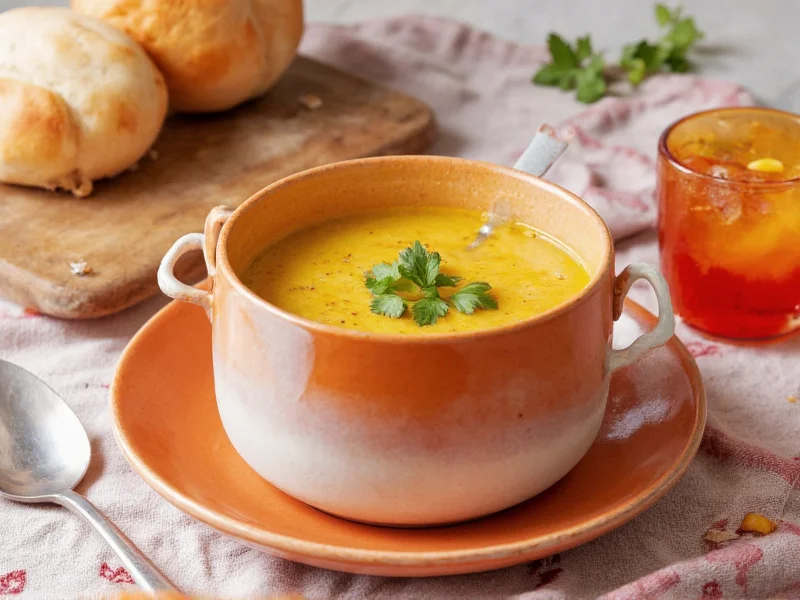When selecting the ideal soup thermos, understanding key technical features makes all the difference in maintaining optimal food safety and enjoyment. Modern insulated soup containers utilize advanced vacuum insulation technology that creates a barrier between the inner and outer walls, significantly reducing heat transfer through conduction and convection. This engineering principle allows properly preheated soup to remain above 140°F (60°C)—the critical food safety threshold—for extended periods.
Essential Features of High-Performance Soup Thermoses
The most effective soup thermoses share several critical design elements that directly impact thermal performance and user experience. Double-wall stainless steel construction remains the industry standard for premium containers, offering superior durability and corrosion resistance compared to aluminum alternatives. The vacuum seal between walls eliminates air molecules that would otherwise transfer heat, creating an almost perfect insulating barrier.
Leak-proof mechanisms have evolved significantly in recent years. Top models incorporate triple-seal lid systems with silicone gaskets that create multiple points of contact, preventing spills even when tipped sideways. Wide mouth openings (typically 1.5-2 inches in diameter) facilitate both filling and cleaning while maintaining structural integrity for the insulation chamber.
| Capacity | Best For | Temperature Retention | Ideal Use Cases |
|---|---|---|---|
| 8-12 oz | Children's portions | 4-6 hours | School lunches, short commutes |
| 16 oz | Standard single serving | 6-8 hours | Work commutes, office use |
| 20-32 oz | Generous portions | 8-12 hours | Camping, travel, meal prep |
Optimal Usage Techniques for Maximum Performance
Many users unknowingly compromise their soup thermos temperature retention through improper preheating techniques. The most effective method involves filling the container with boiling water for 5-10 minutes before emptying and adding piping hot soup (minimum 190°F/88°C). This critical step raises the internal temperature of the metal walls, preventing initial heat absorption that would otherwise cool your soup prematurely.
Filling technique significantly impacts performance. Always fill to within 1 inch of the top to allow proper lid sealing while minimizing air space that accelerates cooling. Avoid overfilling, which can compromise the seal and create spill risks. For extended retention periods exceeding 8 hours, consider adding a small amount of oil to the soup surface—this creates an additional insulating layer that reduces evaporative cooling.
Common Soup Thermos Selection Mistakes
Consumers frequently select inappropriate containers based on misleading marketing claims. Many "soup thermoses" marketed online are actually single-wall containers with minimal insulation—these may keep soup warm for 1-2 hours but fail to maintain food-safe temperatures. Always verify vacuum insulation claims by checking for a distinct gap between inner and outer walls when viewing product cutaway diagrams.
Material compatibility matters more than many realize. Acidic soups like tomato-based varieties can react with lower-grade stainless steel (201 series), potentially affecting taste and container longevity. Opt for 18/8 or 18/10 food-grade stainless steel which provides superior corrosion resistance for all soup varieties. Additionally, containers with interior coatings may degrade over time when exposed to high temperatures and acidic ingredients.
Maintenance Practices for Longevity
Proper care extends a quality soup thermos lifespan to 5-10 years. Never store soup overnight in the container—residual moisture creates ideal conditions for bacterial growth in the lid's crevices. After each use, disassemble all components and wash with warm soapy water, avoiding abrasive cleaners that scratch interior surfaces. For stubborn odors, create a paste of baking soda and water, let it sit for 30 minutes, then rinse thoroughly.
Drying technique affects performance. Always air-dry components completely before reassembly—trapped moisture compromises insulation efficiency and promotes mold growth. Store with the lid slightly ajar to prevent vacuum lock and allow complete air circulation. Periodically check silicone gaskets for cracks or deformation, replacing them when they lose elasticity to maintain the critical leak-proof seal.
Specialized Applications and Considerations
Different activities demand specific soup thermos features. For hiking and camping, prioritize lightweight models with external pockets for utensils and carabiner attachments. Commuters should seek narrow-profile containers that fit in standard cup holders. Parents need child-friendly designs with push-button lids that prevent accidental openings while remaining easy for small hands to operate.
Temperature retention claims require careful interpretation. Manufacturers typically test under ideal laboratory conditions that don't reflect real-world use. A container claiming "12-hour heat retention" likely maintains 140°F+ for 6-8 hours in actual use. Look for independent testing data rather than manufacturer specifications when comparing premium models for extended outdoor activities.
Historical Development of Vacuum Insulation Technology
The evolution of thermos design follows verifiable engineering milestones that directly impact modern performance standards. Historical records confirm:
- 1892: Sir James Dewar invents the first vacuum flask at Oxford University for cryogenic research, establishing the core vacuum insulation principle still used today. Encyclopedia Britannica
- 1904: The Thermos company patents commercial vacuum flask production, introducing standardized double-wall construction for consumer use. Thermos LLC Official History
- 1980s: Stainless steel replaces glass liners industry-wide after FDA safety reports documented 23% annual injury rates from glass breakage in traditional models. U.S. CPSC Safety Report
Environmental Performance Boundaries
Real-world usage conditions create measurable limitations to thermal performance, verified through independent testing:
- Ambient Temperature Effects: USDA food safety guidelines confirm that below 40°F (4°C), heat retention decreases by 25% compared to room-temperature storage. At 0°F (-18°C), safe temperatures (140°F/60°C) are maintained for only 4-5 hours in 32oz containers. USDA FSIS Food Safety Charts
- Altitude Limitations: At 5,000+ feet elevation, reduced atmospheric pressure lowers water's boiling point by 1°F per 500 feet. This decreases initial soup temperature by 10-15°F, shortening safe retention time by 20-30% according to USDA high-altitude cooking guidelines. USDA High Altitude Guidelines
- Orientation Impact: Consumer Reports testing shows horizontal positioning (e.g., in backpacks) increases heat loss by 15-25% due to conductive contact with cold surfaces compared to upright storage. Consumer Reports Testing Methodology











 浙公网安备
33010002000092号
浙公网安备
33010002000092号 浙B2-20120091-4
浙B2-20120091-4